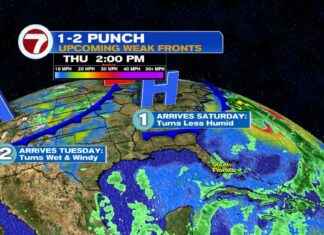Cassius Marcellus Clay Jr., who would eventually be called Muhammad Ali and would be a heavyweight champion, had a very peculiar relationship with food since he was a child. He was not an extraordinarily large baby, but he was destined to become a giant. He weighed just over 7 pounds when he was born at Louisville City Hospital, in Kentucky, on January 17, 1942, in a country marked by racial barriers.
Yes, he was a giant of the ring, as well as an icon of the 20th century, and not only of sports, but of civil rights. And also one of the most biographed athletes. We already knew thanks to David Remnick, author of King of the World: Muhammad Ali and the Birth of an American Hero (Debolsillo), that his appetite surprised his peers at Central High School. Now we know something more thanks to the last biographer of him.
American journalist Jonathan Eig has conducted more than 600 interviews and exhumed FBI documentation, among other files, for his monumental Life of Ali (Captain Swing). Cassius had a copious breakfast at his parents’ little house, at 3302 Grand Avenue, in the West End of Louisville, a modest black neighborhood, but light years away from other segregated neighborhoods with less fame, such as Little Africa.
At the age of 12, when he started boxing, he drank more than a liter of milk mixed with two raw eggs for breakfast. As a child (no doubt to distance himself from the other Cassius Clay in the family, his father, who was a drunkard) he declared war on alcohol. And soft drinks and tobacco, which “are also very harmful for an athlete.” His appetite was actually a metaphor. “You can only hit a target in the ring,” his trainer told him.
He wanted to eat the world. She did it very soon. In 1960 he hung the Olympic gold in Rome. Four years later, against all odds, he was proclaimed heavyweight champion in Miami against the fearsome Sonny Liston. At that time, the murder of Emmett Till was still very present, a child from practically the same farm as Cassius (six months younger) and who reactivated the fight against institutional racism.
In 1964, when his name was still Cassius Clay and he was proclaimed world champion for the first time (a title he would win two more times), a black man could be a star, but he was above all a black man. African Americans continued to be excluded from countless neighborhoods, churches, unions, corporations, hospitals, nursing homes, and schools. There might be a black boxing champion, but not a black judge on the Supreme Court…
There were also no black governors or senators. And let’s not mention black senators. Of the 435 members of the House of Representatives, only 5 were black, 1.15%. There were also restaurants and hotels for white customers only and where the only blacks to be seen were the staff (waiters, bellhops, doormen). This situation caused situations that are inconceivable today, but which then did not surprise almost anyone.
Jonathan Eig explains that his biographie, who was terrified of flying, covered the more than 2,000 kilometers of highway between Miami and New York eating bologna because he could not find a single eating house that would accept it. It is no coincidence that in 1965, before giving Liston his revenge and revalidating his victory, he renounced his “slave name” and embraced the cause of the Nation of Islam, which renamed him Muhammad Ali.
Until then, Cassius Marcellus Clay sounded like a gladiator to him and seemed to him “the most beautiful name in the world.” He bought himself a bus that habitually smelled of frying: when he traveled with his growing entourage he would order huge supplies of fried chicken from Sonja Roy (the first of his four wives and perhaps the one he loved most). He doubted the “racial tolerance” of hoteliers. Once her assistant Drew Bundini wanted to make her see that things were changing and she entered a bar in Yulee, Florida. “Hey, you, to the facilities in the back,” they ordered him.
He was the first champion whose strings were not pulled by the mob, but he succumbed like a puppet to Elijah Muhammad, the leader of the Nation of Islam. This sect mixed messianism, unorthodox Muslim beliefs and African-American racial superiority. Through his influence, Ali separated from Sonja Roy and distanced himself from Malcolm X, whom he had been friends with and who was assassinated when he distanced himself from the Nation of Islam.
Clay/Ali didn’t exist. There were a lot of Clay/Ali. Polyhedral, contradictory and egocentric, he abandoned friends for whom he could stand up, such as Malcolm X himself. But he also refused to go to Vietnam, even if it meant losing the title and being expelled from the ring for almost four years in the height of his career. When he was able to return, he was no longer the same, although he recovered the world title two more times.
The later character is the best known, the fallen idol with Parkinson’s, forgiven by his country and who lit the Atlanta’96 Olympic cauldron. And then there’s the other one, the black Saint Sebastian on the cover of Squire in 1968, like a martyr shot with arrows. He was a loudmouth, yes, so what. He demonstrated that blacks could and should rebel. That was his real fight. When he confirmed his no to war, he called his mother and told her: “I have done the right thing. I can’t wait to go home and see what’s for lunch.”
This text recasts two reports from our website on November 25 and December 2, 2022








